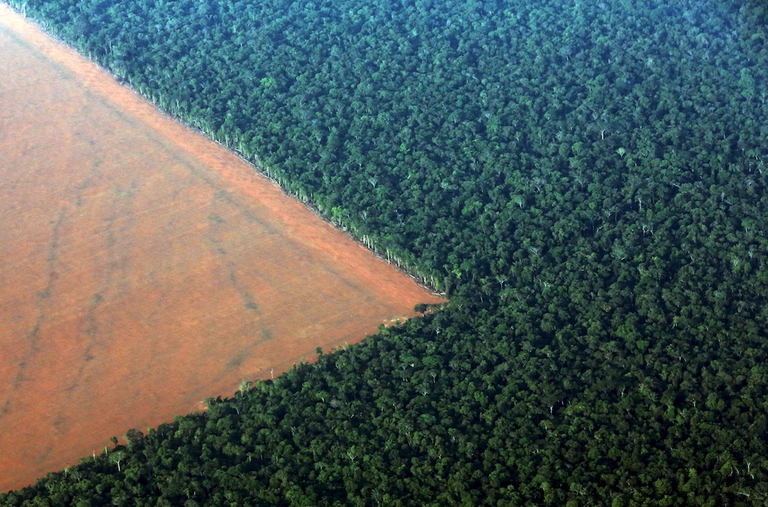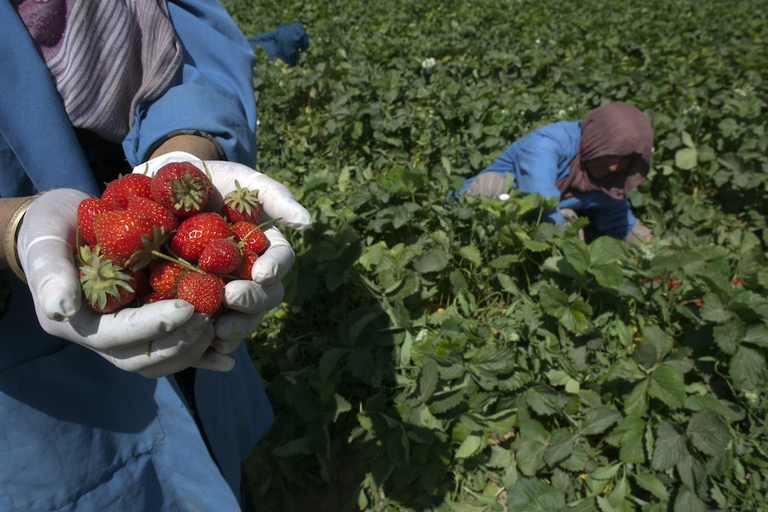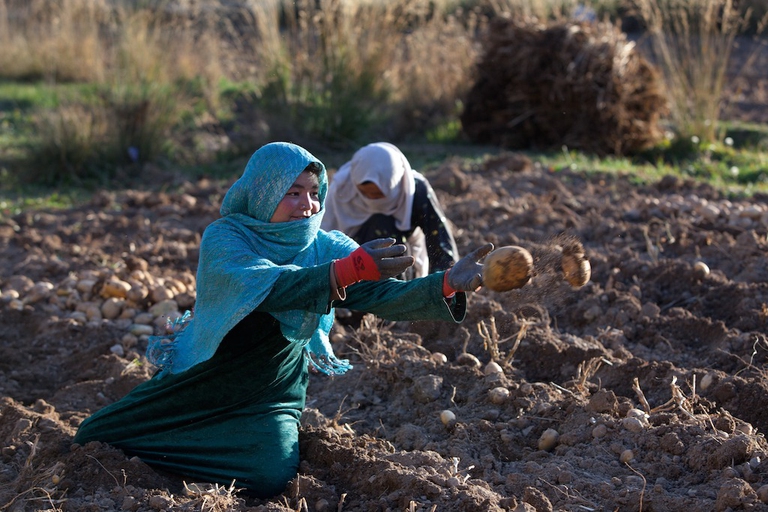
La Fao ha aiutato i piccoli produttori di caffè del Guatemala a far fronte ad una patologia che aveva colpito le loro piante.
by Jeffrey Y. Campbell, Manager of the Forest and Farm Facility at FAO In the Ecuadorian Amazon, Kichwa farmers grow dozens of products on tiny parcels of land. Their lands hum with biodiversity, yielding nutritious foods that have sustained families for generations. Wandering among fruit and nut trees and crops, these indigenous agroforesters fill their baskets
In the Ecuadorian Amazon, Kichwa farmers grow dozens of products on tiny parcels of land. Their lands hum with biodiversity, yielding nutritious foods that have sustained families for generations. Wandering among fruit and nut trees and crops, these indigenous agroforesters fill their baskets to overflowing with a wide range of products, such as cacao, coffee, vanilla, honey, muriti, corn, guayusa, banana, cassava and uva de monte.
This traditional production system, called “chakra”, mimics the natural biodiversity of the forest within which it is practised, supporting trees and agricultural plants of many sizes and species. A single chakra farm can support up to 80 plant species. The chakra system has been in use for hundreds and possibly thousands of years. The soils where it is practised are still productive and the landscapes still teem with life. The immense diversity of produce means the system is ideal for healthy, sustainable diets.
Read more: As climate change alters agriculture, forest food could be the answer. India’s indigenous Kondhs prove it
Yet, despite their many strengths, the chakra and other biodiverse production systems around the world have largely been forsaken in the quest for large-scale food production. The once-diverse basket of forest and farm products has become depleted.
Modern agricultural systems favour specialisation – the monocultural production of commodities that can be fed into voracious, highly focused value chains (systems for taking products to markets, adding value to the products along the way). This agricultural and market simplification is done in the name of efficiency, but there may be long-term dangers.
Read more: Danielle Nierenberg. Eating sustainably means buying foods that have a story
For example, specialized agriculture tends to exclude farmers – especially women and indigenous communities – who grow local products. Putting biodiversity back into agriculture and marketing diverse products, on the other hand, could have enormous benefits for otherwise marginalized people. It could also help reduce vulnerability to agricultural diseases that might otherwise devastate entire crops; decrease the risk posed by fluctuations in prices of single crops; and increase adaptability in the face of rapid environmental and climatic change, thus avoiding serious declines in production.
In an increasingly uncertain world, we need food production systems that can cope with dramatic climatic variations, provide nutritious diets, and build the resilience of communities and landscapes. We urgently need to turn the predominant food-production model on its head. One of the keys for doing so is the humble basket.
Few existing value chains are capable of dealing with the diverse products that originate in forest and farm landscapes. We can encourage this diversity, however, by branding entire “baskets” of produce grown in an area.
Read more: India, how indigenous farmers are developing climate resilient agriculture
For example, the Kichwa produce 30 or more food products: which they are hoping to sell in national and international markets via “basket of products” value chains under a single “Chakra” brand. Such a marketing ploy, with suitable verification, would increase income for farmers by enabling them to sell their entire suite of products, while offering customers more dietary diversity and the opportunity to support sustainable farming.
Another key to refocusing agriculture on diversity is the role of forest and farm producer organizations (FFPOs). On their own, small-scale producers have little power, either in the marketplace or to influence policies that might encourage the development of basket-of-produce value chains. Nevertheless, they are crucial: 90 percent of all farms worldwide are owned by an estimated 1.5 billion smallholders on farms covering 1–10 hectares. By gathering these small farmers together, FFPOs can reach a scale that is competitive with large-scale producers – with the benefits of increasing social and ecological resilience and encouraging biodiverse landscapes and social inclusivity.
Read more: Industrial agriculture isn’t feeding the world, only agroecology can
It is well within our grasp to bring biodiverse food production systems such as that of the Kichwa into the mainstream. The on-farm knowhow already exists in many parts of the world, but we need to give much more support to FFPOs to harness the power of the market.
The Forest and Farm Facility (FFF), an initiative of four organizations including the Food and Agriculture Organization of the United Nations (FAO), has helped nearly 1,000 FFPOs and regional and global organizations with a combined membership of more than 40 million people in developing countries. The FFF works with indigenous and other groups, including Kichwa farmers, to resurrect their farming systems and find valuable markets for their produce. With FFF assistance, for example, more than 60 bioentrepreneurs in Ecuador are working to put certified Chakra products onto the market.
Read more: India, tribal women are leading the conversion to organic agriculture
The FFF will be redoubling its efforts in the next few years because encouraging biodiverse farming systems is important for creating a sustainable future. By adding diversity to their shopping baskets, consumers worldwide will not only be improving the nutrition of their families, they will be supporting sustainable food production systems, resilient landscapes, and smallholder farmers. A “basket of products” value chain approach can help make this happen.
Siamo anche su WhatsApp. Segui il canale ufficiale LifeGate per restare aggiornata, aggiornato sulle ultime notizie e sulle nostre attività.
![]()
Quest'opera è distribuita con Licenza Creative Commons Attribuzione - Non commerciale - Non opere derivate 4.0 Internazionale.
La Fao ha aiutato i piccoli produttori di caffè del Guatemala a far fronte ad una patologia che aveva colpito le loro piante.
According to FAO, if we don’t take action, up to 122 million people more will be driven into extreme poverty by 2030.
Un rapporto della Fao mostra i casi virtuosi di alcuni paesi che sono riusciti a lottare contro la fame salvaguardando al contempo le foreste.
Factory farming conditions and antibiotic-resistant pathogens emerging as a result of them pose an existential threat to humans in the form of zoonotic diseases. Why it’s time to produce and consume food more thoughtfully.
Obesity is no longer a concern solely of higher income, developed countries. The prevalence of obesity and overweight has risen in all regions, including in low-income countries. Today, nearly half of all countries are struggling with both undernutrition and overweight/obesity. Indeed, undernutrition and obesity often co-exist in the same communities – even in the same household.
The UN nominated 2016 the International year of pulses to celebrate the sustainability of grain legumes that are one of the main ingredients of the diet of the world’s most ancient peoples.
People suffering from hunger in the world have dropped, registering a decrease of 10 million people, moving from 805 to 795 million people over the last 2 years. Data are even more significant due to the fact that between 1990 and 1992 the number of hungry people exceeded 1 billion. The new figures
800 million people practice urban agriculture worldwide. According to the Fao, almost a billion people grow plants and raise livestock within and around cities. This is a practice that promotes healthy food access to low-income people and helps them save money on groceries, yet it is illegal in many countries of the world. The
Half of global food production, about two billion tonnes, is wasted, even though a large amount is still edible. This was revealed in a report conducted by the British Institution of Mechanical Engineers in January 2013. One of the major causes of food waste are the bad habits of millions of people, who don’t












